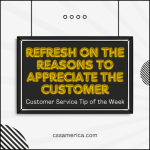I sometimes hear it said
That things have never been like this before.
That challenges are unique,
That stresses seem like more.
I sometimes hear it said
That we’re asked to do much more with less.
That workloads are increasing,
And we’re resource-constrained at best.
And others often say
That things are really very good.
That they enjoy those they work with,
And they appreciate those they serve.
Yes, others often walk around
With a smile on their face,
that comes from their within.
That brightens up the place.
You see, all these things, both bad and good,
Can be true at the same time.
Things can be challenging, and we feel overloaded;
We enjoy others and feel good inside.
It’s amazing how much the external world
Surrounds our every day.
If we let it, it can affect us
In every imaginable way.
But the key is “if we let it,”
The key is our control.
Instead of external driving internal feelings,
The internal drives it all.
My wish for you as we end this year
Is to find peace and joy and light.
To be full of hope on the inside,
To keep positives in sight.
My appreciation for you, as always,
Is of the utmost, as I sit and reflect.
For you who serve your customers,
Deserve big courtesy and respect.
Happy Holidays!
Signup for FREE Tips! Contact Us More Resources for You Visit Our Home Page
























